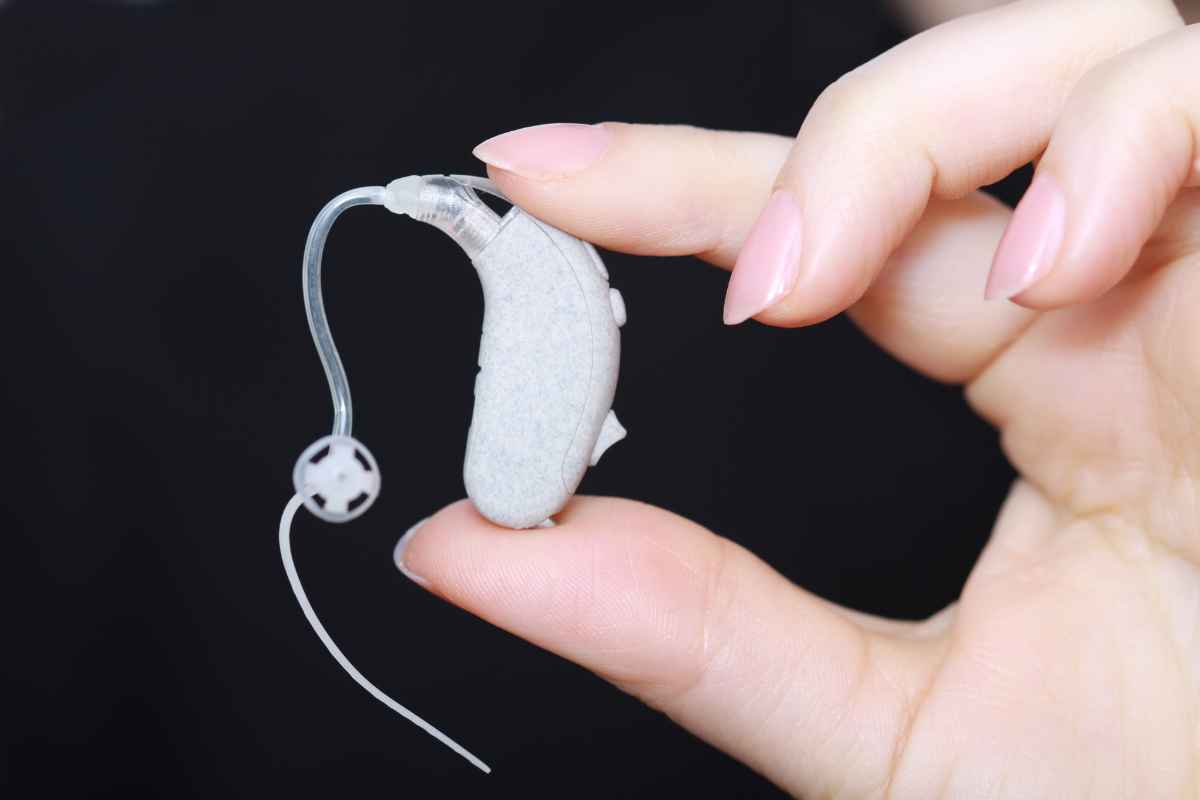It’s common for people to experience hearing loss in both ears, but this is not always the case. Hearing loss is unique to the individual, which is why it’s so important to get hearing aids properly set up by an audiologist.
Although many people need to wear two hearing aids, if you don’t have hearing loss in both ears, then you only need to wear one. The causes of hearing loss vary, and some people experience more severe issues in their left or right ear, which means they would be better off only wearing one hearing aid.
In this guide, we’ll discuss when it is advised to wear only one hearing aid, and what you can expect when doing this.
The Pros and Cons of Wearing One Hearing Aid
If your hearing loss is located on one side of your head, wearing only one hearing aid may reduce the feedback and potential noise issues associated with using two.
If your hearing loss is significantly worse in one ear, then wearing only one hearing aid may also make it easier for you to adjust the sound settings.
This is because your audiologist will be able to customize a single device more precisely, as opposed to having to try and balance two different devices.
On the other hand, there are some drawbacks to wearing just one hearing aid. When wearing only one, you won’t be able to benefit from the sound localization capabilities of two hearing aids.

When Should You Wear One Hearing Aid?
The decision to wear one hearing aid or two should be made with the help of a professional audiologist. An audiologist will be able to assess your hearing loss and determine the best course of action for your particular situation.
If you have moderate hearing loss in both ears, but one ear is worse than the other, then wearing one hearing aid may be beneficial. As mentioned above, it can reduce noise feedback and provide more specific sound settings for the affected ear.
If you have severe hearing loss in one ear and mild to moderate hearing loss in the other, then it’s unlikely that wearing two hearing aids will be beneficial. In this case, it’s probably best to wear one hearing aid in the weaker ear and leave the better ear untreated.
How to Adjust to Wearing Just One Hearing Aid
The adjustment process when using one hearing aid takes time, and you may experience some confusion as your brain adjusts to using one device.
This is especially true if you have been wearing two hearing aids for a while and have now had to switch to wearing just one.
To help make the transition easier, it’s important to speak with your audiologist about adjusting the settings on your single hearing aid. They should be able to make sure the device is tailored to your individual needs and that it provides you with the best sound quality possible.
Related Questions
Is it possible to wear just one hearing aid if you have hearing loss in both ears?
In some cases, it is possible to wear just one hearing aid if you have hearing loss in both ears. This will depend on the type and severity of your hearing loss. It’s important to speak with an audiologist to determine the best course of action for you.
What should you consider before deciding to wear just one hearing aid?
Before deciding to wear just one hearing aid, it’s important to consider the potential pros and cons. Wearing a single hearing aid may reduce feedback and provide more precise sound settings, but it may also mean you have reduced sound localization capabilities. In all cases its important to follow the advice of your audiologist.
Are there any alternatives to wearing just one hearing aid for people with hearing loss in both ears?
For people with hearing loss in both ears, there are alternative solutions such as cochlear implants or bone-anchored hearing aids. It’s best to discuss your options with a professional before making any decision to ensure you determine the best solution.
